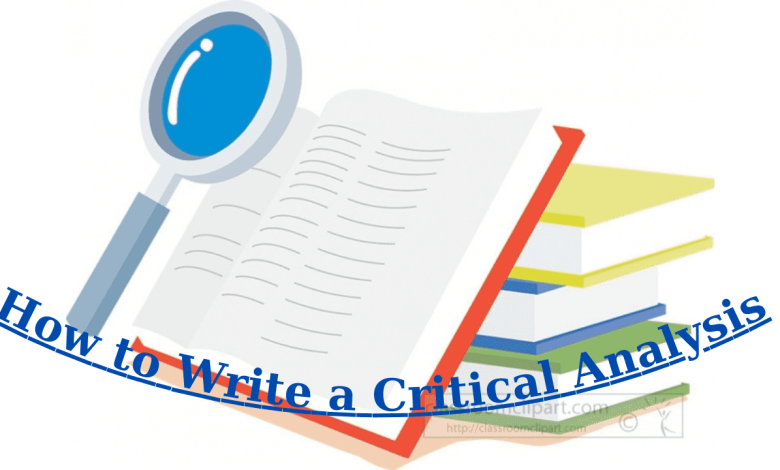
In the enchanting world of literature, where words dance on pages and stories unfold, there exists a powerful skill – how to write a critical analysis.
But What is Critical Analysis and How to Write a Critical Analysis?
These are the questions that come to every student’s mind when he starts his literature study.
Imagine having the ability to disclose the hidden meanings of a narrative, to understand the nuances that escape the casual reader but you as a critical reader can’t miss.
Critical analysis is your key to unlocking the secrets of literature, and in this guide, we will try to master this invaluable skill to write a Critical Analysis.
The Dreams of Tipu Sultan Critical Analysis and Themes
Importance of Writing a Critical Analysis:
Critical analysis is the literary adventurer’s compass, guiding students through the maze of meanings in the text.
It’s not merely dissecting words; it’s about deciphering the soul of a story.
As literature students, your journey does not only become more profound but also enchanting when you grasp the art of writing a critical analysis.
It’s not just about reading; it’s about reading between the lines, and that’s where the magic of Critical Analysis happens.
What is the Critical Analysis Definition?
Critical analysis in literature is the art of dissecting a piece of writing, examining its elements, and discerning how they contribute to the overall meaning that the writer has tried to convey.
It’s the process of going beyond what’s written to understand why it’s written and what it conveys.
Developing analytical skills in literature studies is indispensable.
It’s not about memorizing facts; it’s about training your mind to question, interpret, and appreciate the intricacies woven by the writer into every narrative.
Twilight in Delhi Themes, Characters and Summary
Important Aspects of How to Write a Critical Analysis

Here are some important points that you need to keep in mind when you write a Critical Analysis:
Analyzing Characters:
Analyzing characters in literature involves delving deep into their personalities, motivations, conflicts, and development throughout the narrative.
Here are some important steps in analyzing the characters while writing a Critical Analysis.
1. Character Traits:
Identify and describe the physical, emotional, and psychological attributes of the character.
Look for explicit descriptions by the author and implicit traits inferred from actions and dialogue.
2. Motivations and Goals
Explore what drives the character.
Consider their goals, desires, fears, and aspirations.
Motivations often provide insights into a character’s actions and decisions.
3. Relationships and Interactions:
Examine the relationships the character forms with others.
Analyze how these relationships influence their actions and decisions.
Pay attention to friendships, romantic entanglements, familial bonds, and enmities.
4. Character Development and Arc:
Track how the character evolves throughout the story.
Note significant changes in beliefs, attitudes, and behaviors.
Assess if the character undergoes a positive transformation, a tragic downfall, or remains static
Example of Character Analysis
Let’s take Macbeth from Shakespeare’s play.
Analyze his traits (ambition, guilt), motivations (desire for power), conflicts (internal struggle with morality), development (from a noble warrior to a tyrant), relationships (with Lady Macbeth, the witches), speech (use of soliloquies), and his symbolic representation of unchecked ambition.
Remember, character analysis is not about labeling characters as ‘good’ or ‘bad’ but about understanding their complexities, motivations, and contributions to the overall narrative.
Oedipus Rex Themes and Critical Summary (Sophocles)
Critically Analyzing Themes
Identifying themes in literature involves a deliberate exploration of recurring ideas, motifs, and underlying messages within a text.
Active reading is crucial—annotate and note passages that strike you.
Pay attention to character motivations, conflicts, and resolutions, as characters often embody key themes.
Additionally, analyze the setting, symbols, and motifs that contribute to the overall mood and meaning of the work.
How to Find Specific Themes in a Text?
Consider the relationships between characters and how they contribute to overarching ideas.
Evaluate the language and dialogue, as authors often express themes through their writing style.
Reflect on the author’s intent, thinking about the message or commentary they aim to convey.
Relate the themes in the text to broader real-world issues for a deeper understanding.
Recognizing that a text may have multiple themes, you can explore different perspectives to capture its richness.
Example of Themes Analysis
For example, in George Orwell’s “1984,” pervasive themes of totalitarianism, censorship, and the erosion of individual freedoms are woven into the fabric of the narrative.
The oppressive government, surveillance tactics, and manipulation of information collectively depict a dystopian society under strict control, highlighting the enduring relevance of these themes.
Identifying Literary Devices:
Literary devices are the tools of a writer, and understanding them adds depth to your analysis.
Explore symbolism, imagery, and metaphors – these are the building blocks of meaning and mention the use of these literary devices in your Critical Analysis.
For instance, in “The Great Gatsby,” the green light symbolizes not just hope but also the American Dream’s elusive nature.
Reading With Interest
The first and foremost step to write a critical analysis is reading the text with utmost interest and for that first, you need to select a text of your interest.
When diving into critical analysis, the choice of the text is paramount.
Opt for a text that resonates with your interests and aligns with your academic goals.
Whether it’s Shakespearean sonnets or contemporary novels, your analysis should stem from genuine curiosity.
Reading with Purpose:
Reading isn’t a passive activity; it’s an immersive experience.
Actively engage with the text, question its motives, and mark passages that stir your thoughts.
Effective annotation and note-taking turn a simple read into a treasure trove of insights.
So, always remember to annotate the text while reading it.
Context Matters:
A text isn’t isolated; it’s a product of its time.
Consider historical, cultural, and social contexts.
Shakespeare’s “Othello” takes on new meaning when viewed through the lens of Elizabethan England, revealing societal norms and prejudices.
Finally, Writing the Critical Analysis:

Craft your analysis with a clear structure – introduction, body, and conclusion.
Your thesis statement should be a beacon guiding readers through your interpretation.
For instance, if analyzing “To Kill a Mockingbird,” your thesis could delve into its exploration of racial injustice.
Seeking Different Perspectives:
Literary analysis isn’t a monologue; it’s a dialogue with diverse perspectives.
Engage with various literary criticisms, from feminist to psychoanalytic.
Each perspective offers a unique lens, enriching your analysis and broadening your understanding.
Editing and Refining:
Your first draft is a raw gem; refining turns it into a polished jewel.
Revise for clarity, coherence, and conciseness. Ensure your ideas flow seamlessly, and each paragraph contributes to your overarching interpretation.
3 Critical Analysis Essay Examples (Literary Analysis)
Is Critical Analysis and Summary Same?
No, critical analysis and summary are not the same. They serve distinct purposes in approaching and understanding a piece of literature or any other text.
Summary:
A summary provides a concise and condensed version of the main points, events, or ideas in a text.
It focuses on presenting the key elements of the original work in a shortened form.
Summaries aim to give readers a quick overview without delving into detailed analysis.
The goal is to capture the main plot points, characters, and essential information.
Critical Analysis:
Critical analysis involves a comprehensive examination and evaluation of a text, exploring its meanings, themes, structures, and literary devices.
It goes beyond summarizing by offering an in-depth interpretation and assessment of the work.
Critical analysis involves questioning, interpreting, and forming judgments about the text, often considering its cultural, historical, or societal context.
The analysis may explore the author’s intent, the effectiveness of literary devices, and the overall impact of the work.
In essence, while a summary provides a brief overview of the content, a critical analysis goes further by scrutinizing the text, offering insights, and interpreting its deeper meanings. Both skills are valuable in literature studies, but they serve different purposes in approaching and engaging with written works.



